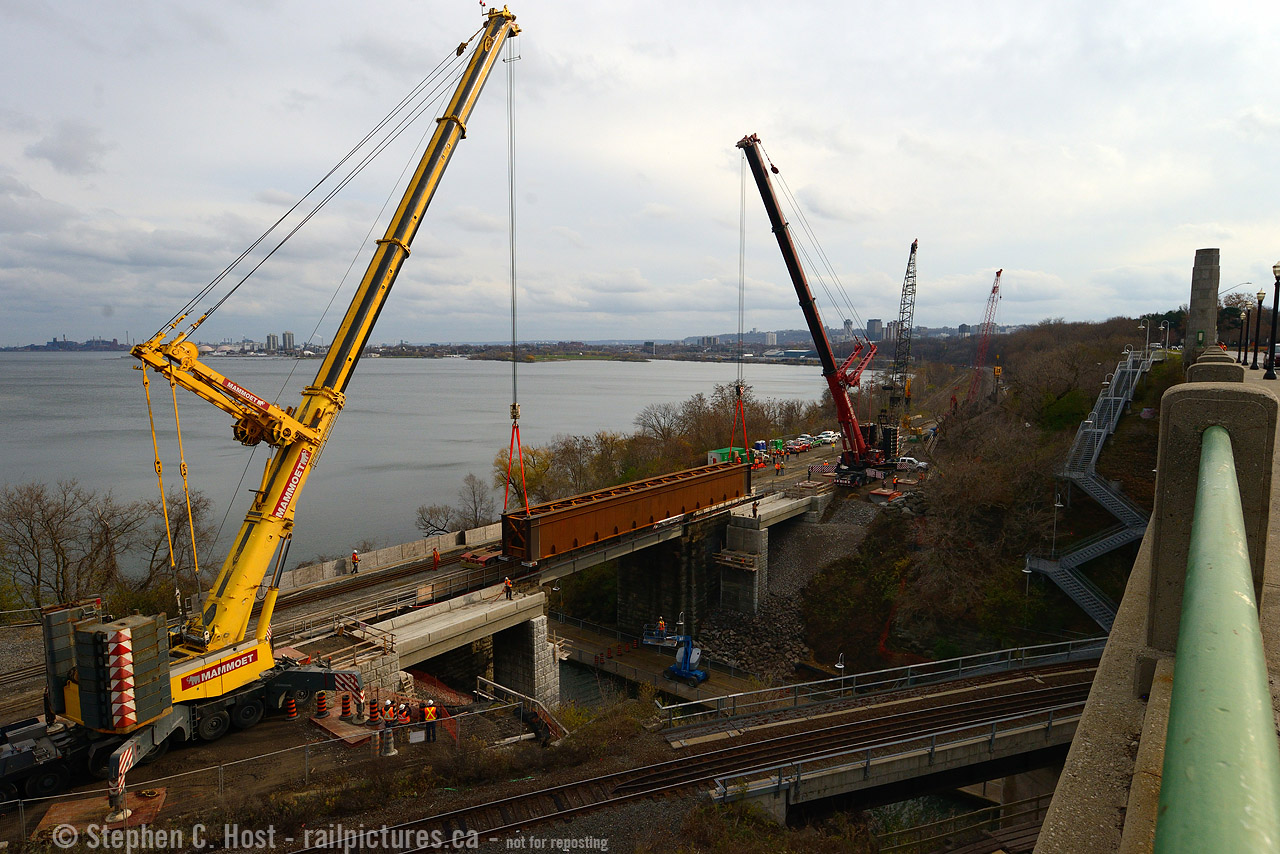|
Caption: First, a history lesson The first railway bridge at this point was opened across the Desjardins Canal in 1855, as a swing bridge (!) but Canada's third worst Railway disaster occurred here in 1857, a Great Western Railway train crashed through the bridge into the icy Canal. It took two years to rebuild the bridge anew and the abutments are all that survives - the bridge having been modernised a couple times since. The TH&B/CPR added a second span in 1897 to cross over to the other side of Burlington Heights to connect the TH&B to Toronto. A third span was added in 1993 (Reg Button photo) for the GO Hunter St expansion.
In this photo cranes from Mammoet are lifting the fourth Railway span - a new 104 foot, 206,000 lb structure into place, with welders from the Ironworkers Local 736 ready to start work as soon as the bridge rests on its new footings. This bridge span was constructed in North Bay by Central Welding and Iron Works and the project is funded by Metrolinx as part of the James St North and Niagara Region GO improvements.
How long did it take to lift the bridge off that waiting truck and place it on footings? 10 minutes. That's it. I was simply in the right place at the right time - having gone down for the Xmas train scheduled to depart at 1400.
Note: Research to find information used in this caption was performed by the Author. Please credit appropriately if this information is used elsewhere as considerable effort went into this caption. Thank you.
|



Now THAT is one remarkable scene. Kudos for taking the time to shoot this image from off the side of the ‘Thomas B. McQuesten’ High Level Bridge (built 1932) ) as well as the excellent caption.
) as well as the excellent caption.
And to think I missed this sitting in traffic!! haha, good job Host
Joe, you missed it by mere minutes. Really. It was tight !!
Thanks Arnold. In doing my homework I now realise many of the old abutments we saw in years past were actually from old road bridges. One old road would have been squeezed in where the Hamilton sub is now… once the TH&B Connection was added the old road was removed.
Funny how in past years adjustments solved clearance problems in most areas. Now it is demolition and rebuilding something overly fancy (Nipigon Hwy 17) to waste as much money as possible.
The 1857 accident was caused by a broken wheel on the locomotive. The replacement bridge was of insufficient size to allow ‘ocean’ vessels into the inner harbour, thus destroying Dundas’ chances of become a major port. Instead, it becomes Cootes “Paradise”.